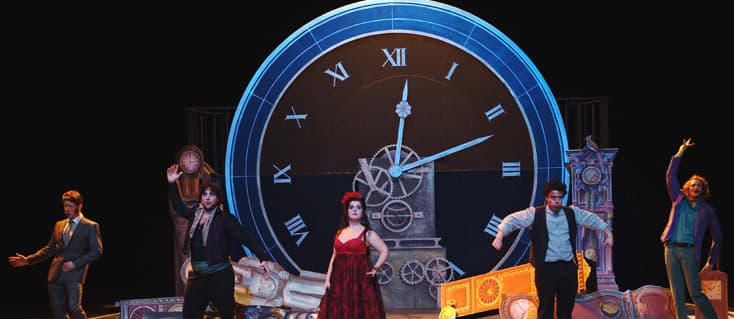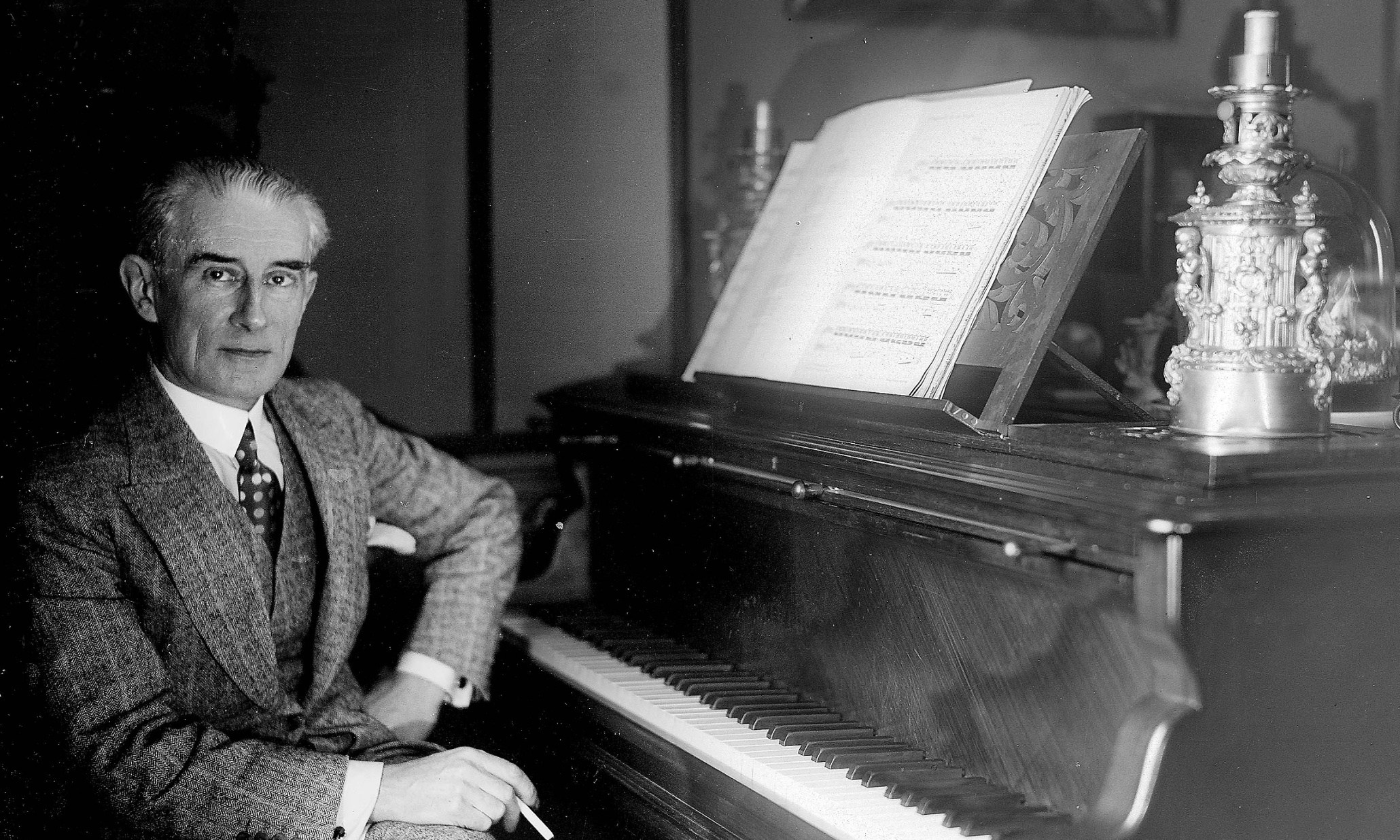A deceitful wife, an unsuspecting husband, three concealed suitors, and a room full of clocks: far from a simple farce, this one-hour comic opera is one of Ravel’s masterpieces. It was in 1911 that the world heard Ravel’s first opera: a setting of the comedy L’heure espagnole by Franc-Nohain.
At around an hour in length, the play caught Ravel’s attention around 1906 when, already a composer of renown at the age of 31 and having achieved success with several songs for voice and piano, he had not yet undertaken a full-scale operatic work.

© mirco magliocca | opéra national de paris
In the summer of 1906, Ravel’s father, a Swiss inventor with a particular love for opera, had a stroke from which he never fully recovered, and it was perhaps his father’s ailing health that spurred Ravel onto this operatic project. He worked tirelessly over the summer of 1907 and had a vocal score ready in just three months.
As a child, Ravel would have spent hours around his father’s inventions, and this gave him a fascination with the mechanical and the clockwork that persisted throughout his whole life, much in the same way that he felt the influence of Spain through the Spanish folk songs his mother used to sing him as a child. Born in the Basque Country, nestled culturally (and geographically) between Spain and France, and given his exposure to inventions from an early age, it is perhaps no surprise that the opera Ravel created is set in a Spanish clockmaker’s shop.
The clockmaker in question, Torquemada, is the entrepreneur from whom his wife, Concepcion, attempts to hide her romantic conquests Gonzalve and Don Inigo Gomez, only to be scuppered by a postal muleteer Ramiro. The story is fairly farcical; an intentional choice, as Ravel sought to ‘regenerate Italian opera buffa’, an art form that relies on comedy and wit.
L’heure espagnole by Maurice Ravel (Franck Ferrari)
There are, of course, many moments that verge on slapstick, but Ravel’s brilliant orchestration provides a perfect counterpoint to the madness on stage.
At the beginning of the opera, the curtain rises on Torquemada’s workshop. Against dark lugubrious chords in the winds and strings, three metronomes are set off at different speeds, immediately transporting us to a room full of ticking timepieces.
Not all the orchestration is so smooth-edged and subtle – when Ramiro tries to pick up the first clock containing Gonzalve, he exclaims ‘something seems to be rattling inside’ while the bassoons and tuba grunt away at the bottom of the orchestra. There are plenty of these farcical effects that highlight moments of particular comedy throughout the opera.

Maurice Ravel
Like some of Ravel’s earlier songs such as the Histoires naturelles, the vocal lines closely mirror the speech-rhythm of the voice; rather than long, extended melodies, the phrases are often short and clipped, as if simply being spoken. The only time all five cast members sing together is at the very end of the opera, where they deliver a collective apotheosis on the events of the previous hour.
EXTRACT | ‘Adieu, cellule, adieu, donjon !’ from L’HEURE ESPAGNOLE (Ravel) – Opera Zuid
Despite the romantically charged subject matter of the work, there is an element of detachment throughout the opera. Ravel had a reputation for being aloof. He dressed in a dandyish style, often appearing very well-clothed, every element of his outfit perfectly tailored to complement the whole, and even his closest friends reportedly had a hard time getting to know him.
It is impossible to say how much of themselves a composer deliberately puts into their work, but it is interesting that, even in Ravel’s homage to opera buffa (known for its comedic plots and light nature), we find no shortage of poise and precision.
Despite what the plot may have you believe, this is far from a simple music hall farce. There are moments of sublime beauty in this opera, expertly crafted and, like a dandy, presented and carried in a perfectly poised way. Of course, there are moments of comedy, like the tried-and-tested bassoon grunt, but Ravel never forgets to remind us of the craftsmanship at work. You need only listen to a few minutes of this wonderful opera to realise that the comedic and bizarre can coexist alongside the sublime and beautiful.
For more of the best in classical music, sign up to our E-Newsletter




